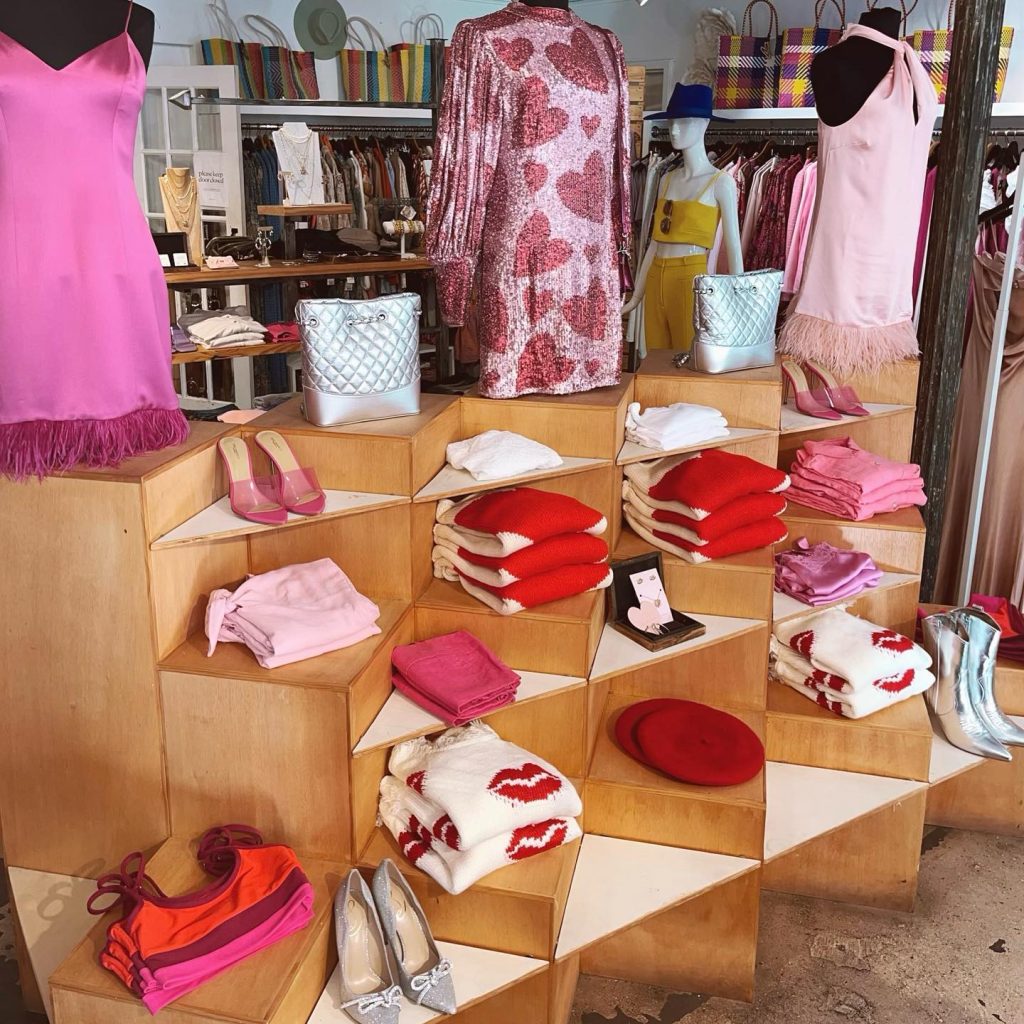Why Boutique Fashion is the Ultimate Option for Special Design
Why Boutique Fashion is the Ultimate Option for Special Design
Blog Article
Discovering the Advancement and Influence of Clothes on Modern Style Trends
The evolution of clothes has substantially affected contemporary style patterns, merging historical criteria with innovative advancements. Famous numbers like Coco Chanel and Yves Saint Laurent reinvented the apparel industry by introducing concepts that prioritize convenience and availability, which remain to resonate today. At the same time, technological strides in areas such as 3D printing and smart textiles are redefining style opportunities and consumer experiences. Additionally, the growing emphasis on inclusivity and sustainability is reshaping market criteria. As we take into consideration these complex impacts, one should doubt just how these elements collectively redefine fashion's function in reflecting and forming modern society.
Historical Fashion Influencers
In the tapestry of fashion background, specific numbers have actually left an enduring mark, shaping the patterns and styles that specify entire periods. Coco Chanel, an advanced designer, redefined ladies's fashion by presenting comfortable, stylish garments that departed from restrictive corsets. Her renowned Chanel match and little black dress have come to be ageless staples in closets worldwide. In A Similar Way, Christian Dior's post-war "Makeover" in 1947, with its event of femininity via full skirts and cinched midsections, marked a go back to opulence and has actually continued to influence designers.
Elsa Schiaparelli is an additional crucial number, renowned for her avant-garde designs that integrated surrealist art, collaborating with Salvador Dalí to develop whimsical pieces that tested traditional visual appeals. Her ingenious usage of shade and bold patterns reverberates in contemporary fashion. Yves Saint Laurent, on the other hand, equalized high style with prêt-à-porter collections, bringing path designs to the masses and setting a precedent for contemporary ready-to-wear lines.
These visionaries, amongst others, not just reinvented fashion in their times yet also established withstanding trends that resonate in today's fashion business, giving a structure whereupon modern developers continue to build and introduce. Their heritages emphasize the significance of imagination and daring in style's ever-evolving story.
Technical Innovations in vogue
In the middle of the vibrant landscape of the fashion market, technical innovations stand at the center of development, reshaping just how designers create and customers involve with style. The assimilation of 3D printing has actually revolutionized design processes, allowing developers to trying out complex structures and sustainable materials that were previously inconceivable. This modern technology assists in rapid prototyping, lowering waste and expediting manufacturing times.

Smart textiles, embedding technology into fabrics, are additionally transforming the industry. Advancements like self-cleaning and temperature-regulating materials use enhanced performance and comfort. Wearable technology, including features like health and fitness monitoring and communication, adds a new measurement to fashion, merging appearances with functionality.
Cultural Shifts and Style
As technical improvements remain to reshape the garment industry, social changes are just as prominent, redefining design and consumer choices. In recent times, the rise of social media sites systems has actually increased the circulation of global fashion fads, permitting diverse cultural impacts to exist side-by-side and converge. This digital interconnectivity has actually helped with the fast exchange of ideas, resulting in an extra eclectic and comprehensive interpretation of style that shows the multifaceted nature of modern-day culture.
Social recognition and admiration have prompted developers to attract inspiration from a wider spectrum of ethnic and historical contexts, incorporating conventional concepts with modern aesthetic appeals. This blend has resulted in fashion that reverberates with a wider target market, promoting a feeling of identification and belonging across various demographics. Additionally, the raising demand for customization has driven brand names to supply customizable alternatives, making it possible for consumers to express individuality while reflecting their cultural heritage.
Furthermore, shifting social values have impacted internet style, with inclusivity and diversity ending up being main themes. The sector has actually started to embrace designs and influencers of various body types, ethnic cultures, and gender identifications, challenging conventional beauty requirements. This improvement underscores the power of social shifts fit the future of fashion, as style becomes a much more authentic expression of individual and cumulative identity.
Sustainability and Modern Design
While the style sector continues to advance, the critical for sustainability has become significantly urgent, influencing contemporary design practices. The surge of slow fashion, which highlights quality over amount, urges consumers to invest in ageless items rather than short-term patterns.
Furthermore, modern-day design is identified by its development in minimizing waste and advertising circularity. This technique not just reduces environmental influence but likewise improves the social responsibility of fashion residences.

Future Trends in vogue

Sustainability will continue to be a driving pressure in forming future style fads. The industry is increasingly embracing eco-friendly products and moral production methods, reacting to an expanding customer demand for liable practices. Developments such as bio-fabricated materials and closed-loop recycling systems are readied to redefine how garments is generated and eaten, decreasing ecological effect while keeping style and quality.
Cultural changes, including the increase of inclusivity and variety, will certainly also play a pivotal function. As culture becomes extra aware of social problems, style is expected to end up being a system for expression and modification. Developers will likely concentrate on developing collections that show a more comprehensive range of experiences and identifications, championing representation and ease of access.
Verdict
The evolution of garments considerably affects modern-day style trends, where historical influences combine with modern designs. Key figures like Coco Chanel and Yves Saint Laurent have actually redefined style, while technological advancements such as 3D printing and clever textiles expand innovative opportunities. Social changes in the direction of inclusivity and sustainability urge brands to accept and embrace moral techniques variety. This recurring evolution underscores fashion's role as a mirror to societal values and technical innovation, recommending a future abundant with innovation and inclusivity.
The evolution of apparel has actually dramatically affected contemporary fashion trends, combining historical precedents with cutting-edge innovations.Among the vibrant landscape of the fashion industry, technical improvements stand at the leading edge of development, reshaping just how designers create and customers involve with fashion.While the fashion sector continues to evolve, the vital for sustainability has come to be significantly urgent, affecting contemporary design techniques. As sustainability ends up being ingrained in contemporary style, it paves the means for a more conscious and liable fashion sector.
The development of clothing substantially impacts modern-day fashion fads, where important link historical impacts merge with contemporary designs.
Report this page